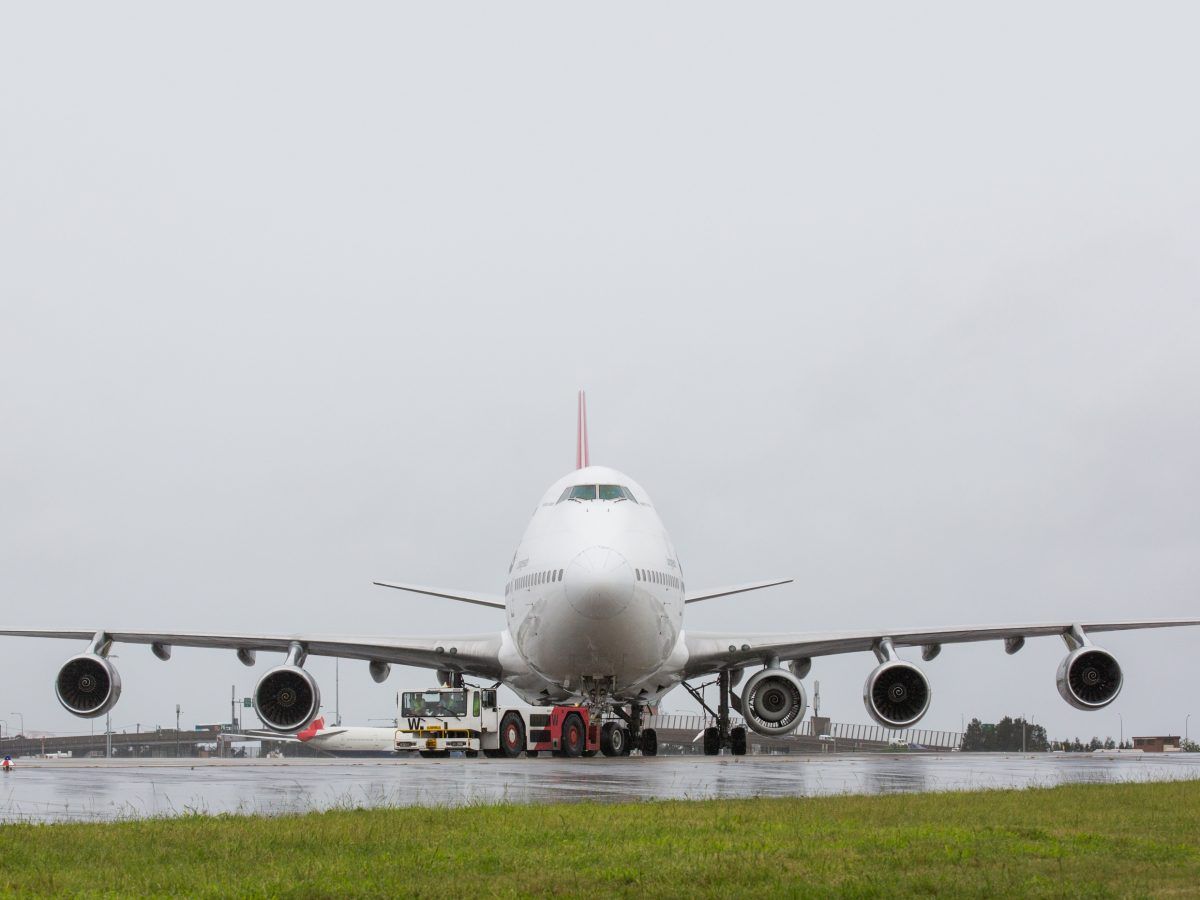The Boeing 747 has been a game-changing aircraft in so many ways. Despite being built over five decades ago, it has kept up with the times and shaped modern aviation. One unique feature of the widebody is its ability to fly with five engines. Sound ridiculous? Here’s what we mean.
The groundbreaking Queen
With so many airlines waving goodbye to their passenger 747s, it can be easy to think of the Queen as a bit of a dinosaur, especially since Boeing handed over the last 747 to be ever produced at the end of January, bringing an end of an era that lasted over half a century. Still, this aircraft was a groundbreaking piece of machinery in so many ways and served to shape modern commercial aviation as we know it today.
One of the unique features of the 747 was its fifth pod. This ‘spare’ engine mount gave it the ability to lug along an extra engine, something it was capable of doing even on a revenue flight. Of course, the efficiency of the flight would take a hit, but reportedly there were no issues with handling as a result.
Back in January 2016, this spare pod was put to good use by Australian flag carrier Qantas. It needed to get a replacement engine to Johannesburg in South Africa fast, and by far, the quickest and easiest way to do this was by using the fifth pod on a 747 that was headed that way anyhow.
QF63 strapped a six-ton Rolls-Royce engine onto its spare pod and successfully ferried the engine to its destination. For passengers on that flight, it must have been an odd sight to look out the window and see three powerplants!
Get the latest aviation news straight to your inbox: Sign up for our newsletters today.
Using the fifth pod
The fifth pod is located under the port-size (left) wing and is located close to the body. Of course, the engine isn’t powered for the flight but is just mounted there for transportation.
You might think that the weight of this extra engine causes balance issues. However, because the mounting is so close to the fuselage, the weight of the engine is close enough to the center of gravity that it doesn’t cause a problem, although it does increase drag and fuel burn.
The Boeing 747 is not the only aircraft that can fly with five engines, however. In fact, several older planes, such as the DC-8 and 707, used to have fifth pods installed to transport spare engines.
Love aviation history? Discover more of our stories here.
More uses of the fifth pod
One of the most notable uses of the fifth pod in recent times has been the Virgin Orbit 747, affectionately known as Cosmic Girl. This 747 launches rockets into space for the purpose of faster and easier satellite deployment.
In order to ferry the LauncherOne rocket up to flight level, Virgin adapted the fifth pod to accommodate the payload. Although it required some fairly extensive modifications, the natural ability of the 747 to carry a pylon under its wing in the fifth pod position made this even easier.
Just last month, Cosmic Girl released the LauncherOne rocket at 35,000 feet above the Atlantic Ocean. However, the aftermath of the event didn't go according to plan, causing an FAA and SAIA investigation to be launched.
Moreover, Pratt & Whitney has been known to operate a Boeing 747SP with five engines. The spare unit enables the manufacturer to rest conceptional engines in real-life flight conditions.
A versatile unit
Not only can the 747 fly on one engine, but it can also fly on fewer than four in an emergency. It can even have some functionality to help land with one engine operational. Thus, the veteran has seen it all over the years and has proven aircraft's ability to adapt to whatever is thrown at it.
Did you know the Boeing 747 could fly with five engines? What do you make of the overall history of the Queen of the Skies? Let us know what you think of the aircraft and its story in the comment section.


